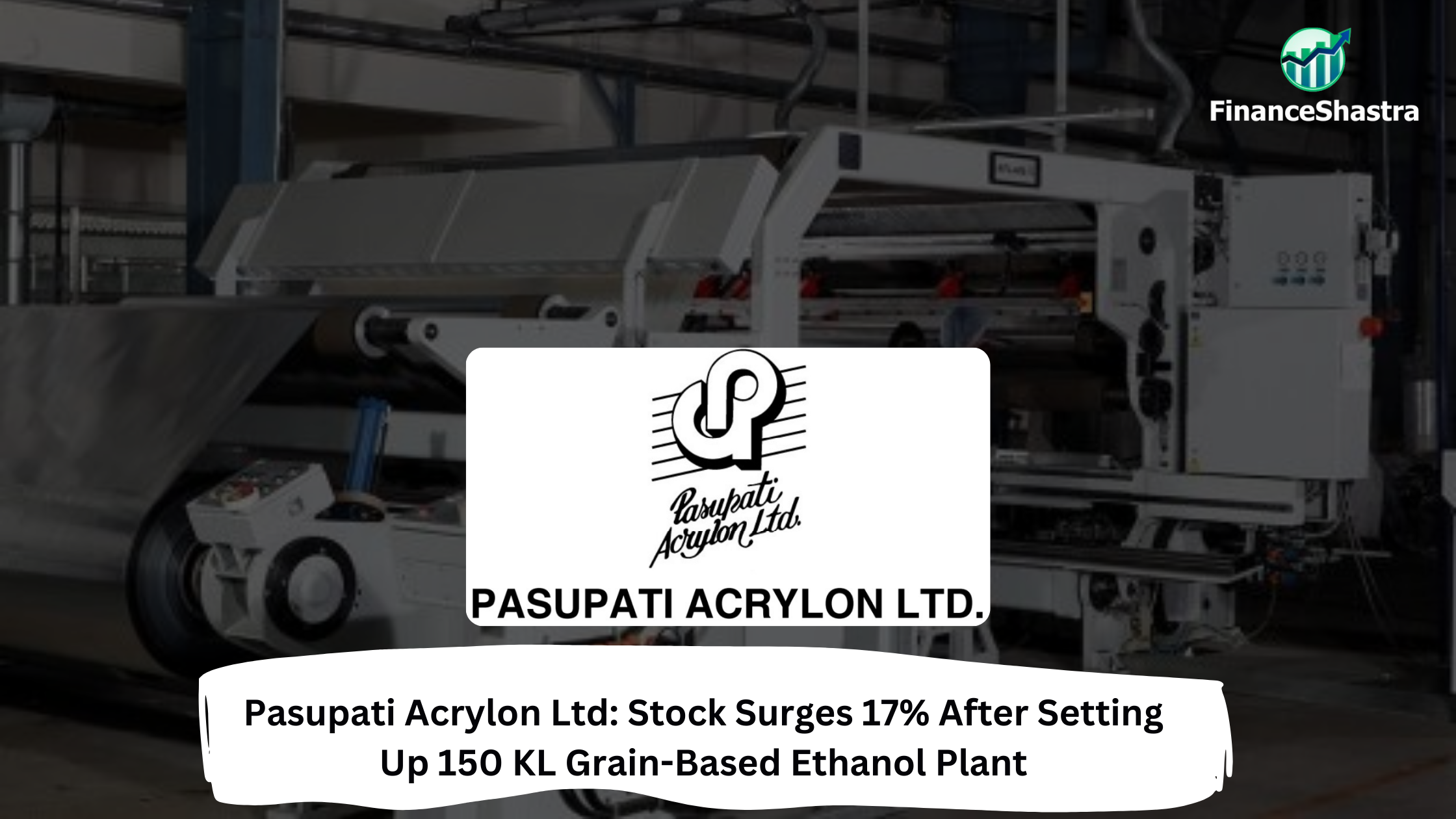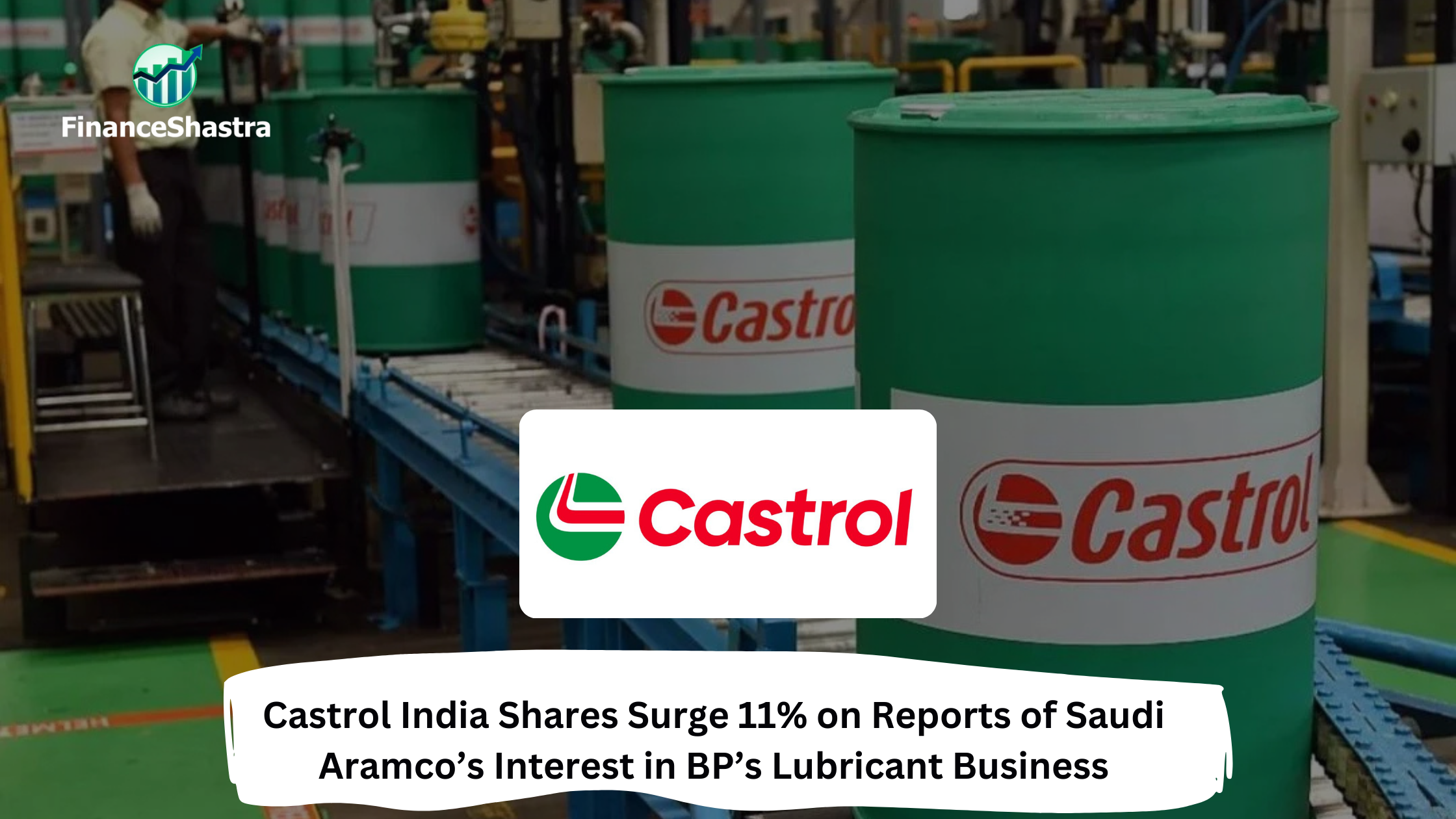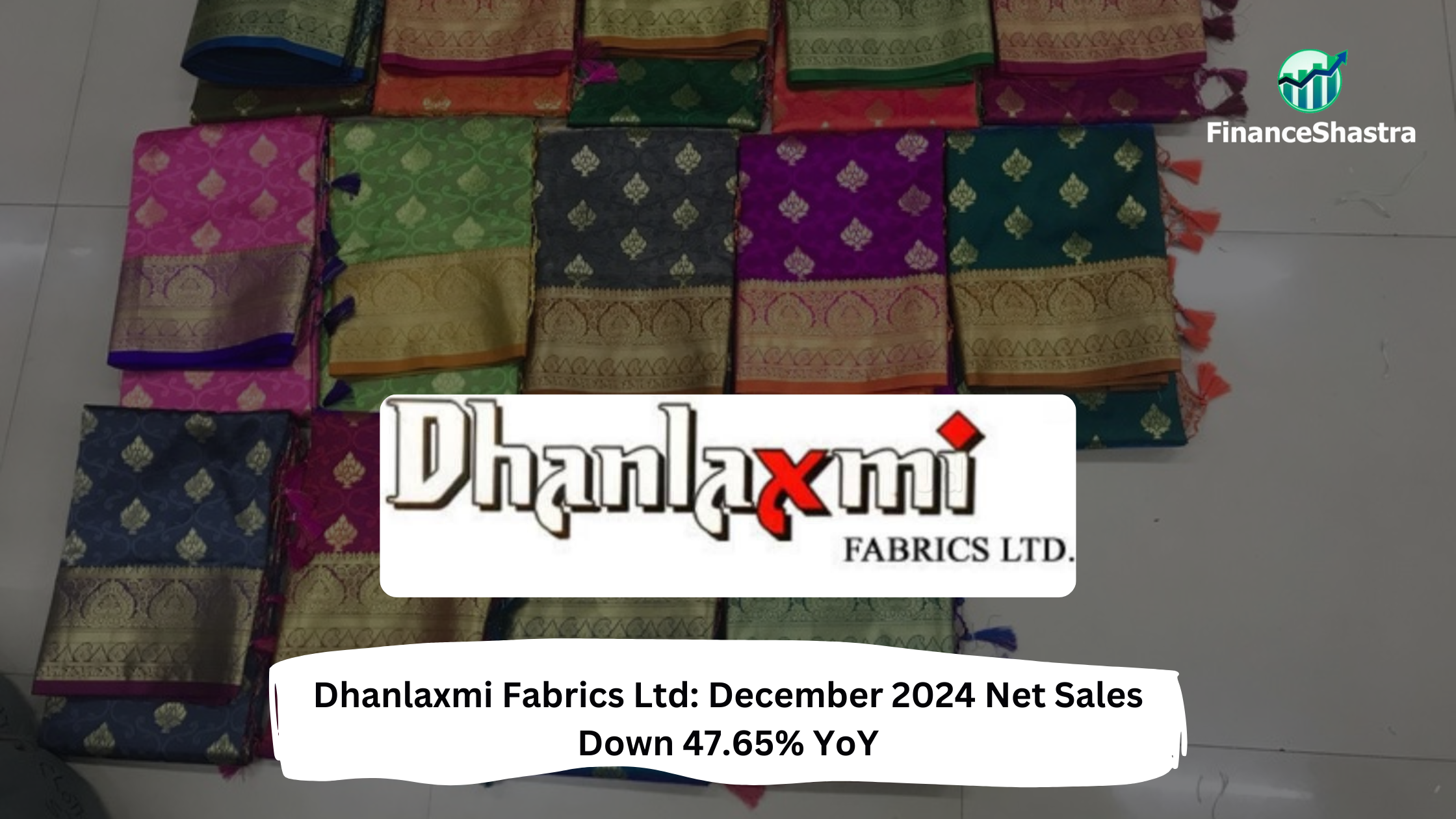Pasupati Acrylon Ltd: Stock Surges 17% After Setting Up 150 KL Grain-Based Ethanol Plant – Growth, Stock Trends & Future Prospects
Business and Industry Overview:
Pasupati Acrylon Limited (PAL) is a leading Indian company that makes acrylic fibers and cast polypropylene (CPP) films. It started in 1982 and has its main office in New Delhi. Its manufacturing unit is in Thakurdwara, Uttar Pradesh. The company makes different types of acrylic fibres under the brand ACRYLON. These fibres are used in sweaters, shawls, blankets, carpets, and upholstery. Some fibres are gel-dyed, meaning they have colour inside the fibre. Some are low-pill fibres, which do not form small fabric balls. Some are shrinkable and are used to make fabrics look like wool. Others are soft-feel fibres, which make clothes more comfortable. The company also makes tow-dyed and super-bright fibres. In 2019, PAL started making CPP films. These films are used in food packaging, medicines, and other industries. The company has a factory with high-tech machines from Germany, Italy, and the UK. It makes many types of CPP films, such as lamination films, white opaque films, and other films. It also makes medical-grade films, anti-fog films for bread packaging, retort films for high-temperature food storage, and peelable films for easy-open packaging. PAL is financially strong. In March 2023, its revenue was₹217.14 crore, and its profit was₹5.38 crore. It has a market value of ₹400.12 crore. Its earnings per share (EPS) is ₹3.99, and its return on equity (ROE) is 10.82%. The company always tries to reduce costs and improve profits. In 2024, PAL started a 150 kiloliter per day (KLPD) ethanol plant. It makes ethanol from grains. Ethanol is a clean fuel that can reduce the use of petrol and diesel. This helps the Indian government’s ethanol blending program. PAL sells its products in India and other countries. It focuses on quality, new technology, and sustainability. It has strong relationships with customers. The company keeps expanding its business and making new products. It is one of the top companies in synthetic fiber and packaging in India.
India’s acrylic fiber and CPP film industries are growing as demand increases in clothing, packaging, and industry. Acrylic fiber is a man-made material made from polyacrylonitrile. India makes 147.40 metric tons of acrylic fiber each year. But production is going down because making it is expensive and profits are low. In 2016-17, production dropped by 17% compared to the previous year. The demand is also not growing fast. China makes and uses the most acrylic fiber in the world.
India’s CPP film industry is growing fast because packaging needs are increasing. CPP films are strong, flexible, and keep moisture out. This makes them useful for food packaging, medicine, and industrial wrapping. These films help keep food fresh and protect medicines. Many Indian companies are using new machines to make better-quality films. The government is also supporting local production and promoting eco-friendly packaging to reduce waste. Both industries have challenges like high costs, competition, and price changes. But companies are finding new ways to improve quality and reduce costs. As clothing and packaging needs grow, these industries will also expand and become stronger in the future.
Latest Stock News:
Pasupati Acrylon Ltd’s stock price jumped 13.49% to ₹48.47 because investors got good news. The company finished making a big ethanol plant that can produce 150 KL per day. This made people excited, and the stock went up nearly 17% to ₹49.89. But it is still 29% lower than its highest price of ₹70.79 in September 2024. The stock has gone up more than 50% from its lowest price of ₹33.20 in June 2024. The company made good profits in the third quarter of FY24 -25 and has less debt, which means it is in a strong financial position. In the last five years, the stock has grown 600%, but in the past year, it has not moved much. In March 2025, the stock rose 23.5% after falling 15% in February. In January 2025, it went up 3%. The company has not yet said when the ethanol plant will start working, but people are hopeful that it will happen soon. Investors are keeping a close watch on the stock.
Potentials:
Pasupati Acrylon Ltd has big plans to grow. The company has built a big ethanol plant that can make 150 KL per day. It is now getting ready to start making ethanol. This will help the company sell more and earn more money. The government supports biofuels, so this can help the company even more.
At the same time, the company is working to make better-quality acrylic fiber. It will use new technology to improve its products. This will help the company sell more in India and other countries.
The company also wants to stay strong financially. It will keep its debt low and try to make more profit. This will help it invest in new projects and grow more. It may also work on renewable energy and eco-friendly materials.
In the future, the company may work with other businesses, open new factories, or find new ways to grow. Investors believe these plans will help the company become bigger and increase its stock price. People are excited to see how the company moves forward.
Analyst Insights:
- Market capitalisation: ₹ 477 Cr.
- Current Price: ₹ 53.2
- 52-Week High/Low: ₹ 71.0 / 33.2
- Stock P/E:13.0
- Dividend Yield: 0.00 %
- Return on Capital Employed (ROCE): 6.09 %
- Return on Equity: 4.09 %
Pasupati Acrylon Ltd. has not grown well in the past five years, with sales falling by 6.96% and profit dropping by 14% in this period. In the last three years, profit has dropped by 33%, showing weak performance. The company’s return on capital employed (ROCE) is 6.09%, and its return on equity (ROE) is 4.09%, which means it does not earn much from the money it uses. Even though its latest sales improved to ₹174 crore, past performance shows unstable growth. The stock price increased by 43% in one year, but long-term growth is uncertain. The company has low debt, and promoters hold 65.87% of shares, which shows stability. However, it does not give dividends, meaning investors do not get extra money. Also, it takes 95 days to sell inventory and 35 days to get paid, which is not very efficient. Because of this mixed performance, investors should wait and watch to see if the company keeps improving before buying or selling.










